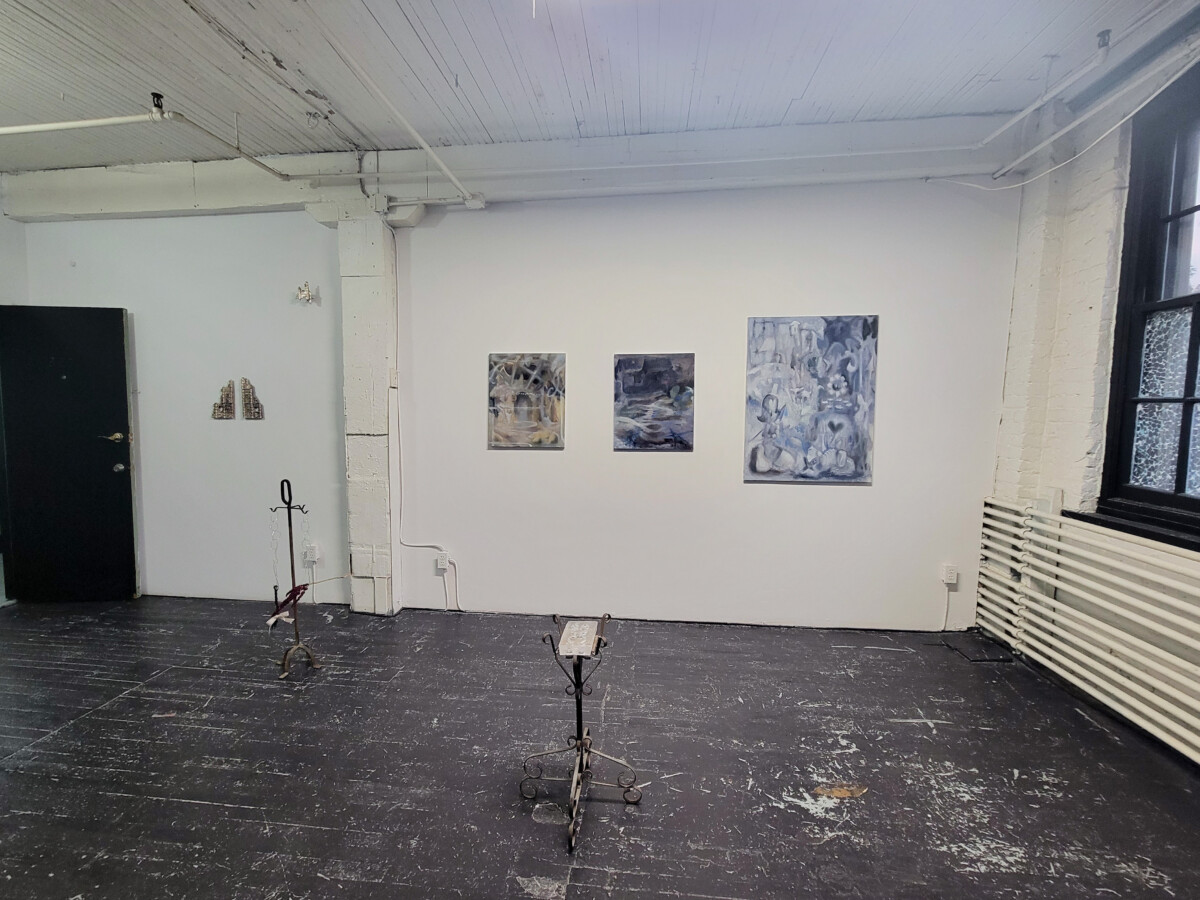“A Coin on a Tongue” is now on view at Espace Maurice.
“A Coin on A Tongue” is an exhibition curated by Marie-Ségolène C. Brault at her apartment-gallery, Espace Maurice, located on Ontario street in Montréal. The exhibition includes works by artists Adrienne Greenblatt, Dante Guthrie and Anjali Kasturi, that encapsulate their spiritual, fantastical and historical world-building visions through their unique visual languages and conceptual framing. Each piece depicts historical fractions or fantastical worlds that coexist with our universe.
Adrienne Greenblatt’s glasswork installations occupy several corners of the gallery. The pieces offer multisensorial references to the human body, alchemy, medieval weaponry and esotericism through the use of hair, metal gates and glass. Each glossy surface draws attention to how sunlight reflects and refracts around the exhibition space. The ghostly materiality of each one urges the viewers to embrace their spiritual and historical vivacity. They welcome the presence of artifacts with historical characteristics and essence in the modern space of the gallery.
Dante Guthrie’s metal works are infused with the illusion of gothic architecture and storytelling through his combination of traditional atelier process and modern technologies. His metallic and abstracted architectural façades and frames are copiously detailed but open to interpretation in terms of conceptual vision—the frames can be interpreted as a depiction of a fantastical world, a futuristic prophecy, a medieval illusion, a talisman or a symbolic illustration of a spiritual practice.
As for Anjali Kasturi’s paintings, their use of desaturated and washed-like colors, foggy depiction of space and mysterious representation of objects and landscapes convey a sense of fantasticality and fear of the unknown. The pieces invite us into the happenings and to explore the sensational atmosphere—to smell and feel the fog or the breeze. They allow the viewer to perceive the works in relation to their personal experience and capacity, focusing on the individual connection and interpretation of the space of the works. Each painting portrays an imaginary universe, a symbolic representation of an event or a dream traced back to an individual experience.
Throughout the exhibition, the various materials used in the works resemble distinct feelings and conversations that emphasize the relationship between the artists, their materials and their spiritual practices.
Looking at the venue of the exhibition itself, a studio apartment, offers visitors a sense of community and movement. The continuity of the exhibition into the living space connects the works in the gallery and personal belongings. We do not necessarily know where the exhibition starts and where it ends, challenging the definition of a public space and public display. “A Coin on a Tongue” will be on view until Oct. 28.
